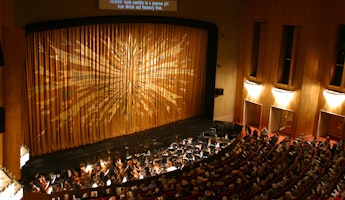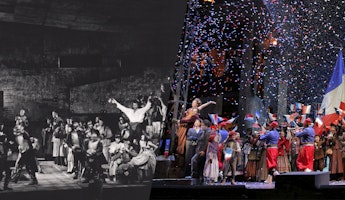Blog
November 30, 2023
Mexican History Through the Eyes of Diego Rivera
If we were to sit down and list all the reasons the arts are so important, we’d need a list longer than Santa’s. From uniting communities to pushing important messages to creating a universal form of education, art can take many forms and meanings. And while many artists may excel at one of these over the other, some—like Diego Rivera—mastered all. As one of Mexico’s most prolific painters, Rivera played with a multitude of styles throughout his career, but it was his murals that cemented his fame. While murals as public art is now a commonplace sight (just look at LA), they used to be rare outside of paleolithic drawings or religious frescos. All of that would change in the early 1920s with the birth of Mexican Muralism.
Inspired by the ideals of the Mexican Revolution, the newly established Mexican government wanted to do something that would inspire the population, showcase their history, and envision a bright future. To accomplish this, they commissioned artists to create murals across the nation, particularly in Mexico City.
The impact was immense. Accessible to a largely illiterate populace, and freely available in public spaces of their daily lives, these murals provided many people with their first insights into Mexican history. They also did away with the white, colonial view of Mexican history and emphasized the country’s indigenous roots, with peasants and workers depicted as the heroes.
So where does Diego Rivera fit into all of this?
After visiting Italy in 1920, Rivera was captivated by the Renaissance frescoes found in churches, and his newfound interest coincided with the rise of the mural movement. When he returned home to Mexico, he had both the inspiration and the funding to dive into his newfound interest. His first foray into the genre would be the 1922 fresco Creation, painted on the wall of National Preparatory School auditorium in Mexico City. Clearly Renaissance-inspired, with its inclusion of a Biblical scene and religious figures with haloes, this style would quickly give way to Rivera’s own artistic sensibilities. From 1922 to 1928, he undertook the Herculean feat of Ballad of the Proletarian Revolution. Consisting of 120 frescoes, the series focused on Mexico’s revolutionary history, glorifying the masses and showing that murals weren’t reserved just for the depiction of gods and kings.
Rivera would follow up this grandiose work with another mighty undertaking: History of Mexico, which can still be found adorning the walls of Mexico City’s Palacio Nacional. As you walk up the staircase, you’ll see everything from the fall of Teotihuacan to the Mexican Civil War. Rivera was not shy about bringing his political views into his work, highlighting class struggles and using the Marxist ideal of a communist utopia as his vision for the future. Marx himself even appears in the mural, along with Rivera’s new bride and fellow leftist, Frida Kahlo.
Word of Rivera’s murals reached the United States, and after completion of History of Mexico he was commissioned to capture the history of Detroit in mural form, right in the Detroit Institute of Art’s central foyer. He did as asked, detailing said history from the perspective of the workers—a powerful and borderline-radical perspective at a time when the once-mighty industrial hub was caught in the throes of the Great Depression. Rivera was not without his critics (especially after depicting a nativity scene with religious figures replaced by doctors and their patient) but won over an equal number of admirers, inspiring a generation of American artists to create their own murals around the country.
The impact of muralism can still be felt today, especially in Los Angeles, with its cavalcade of vibrant street art. Rivera’s impact on public space and the role of an artist in society cannot be understated, nor can his ability to translate Mexican history into a visual form and inspire a generation of idealists. While his name was one of many in a broader artistic movement, it certainly loomed the largest. It was thanks to Diego that muralism took off like it did, putting Mexico on the map as an art hub and shaping countless cityscapes—ours included.








/03-cosi/_dsc0996_pr.jpg?format=auto&fit=crop&w=345&h=200&auto=format)
















